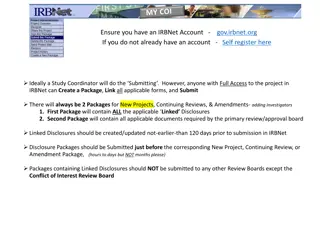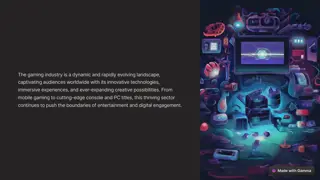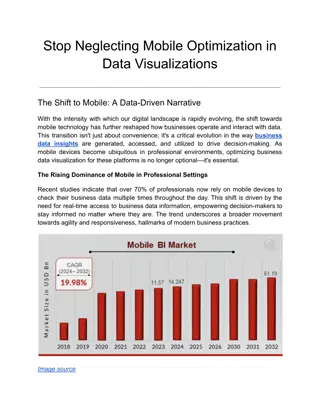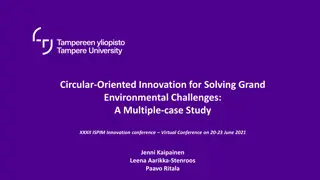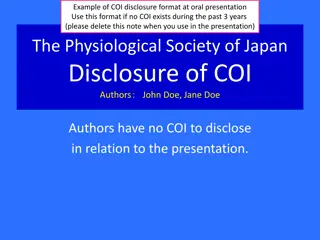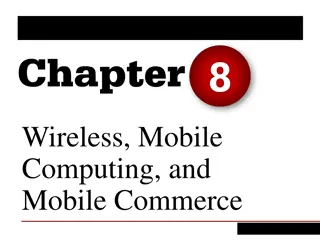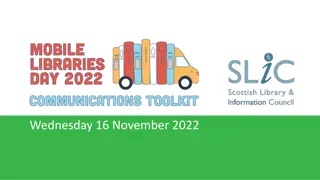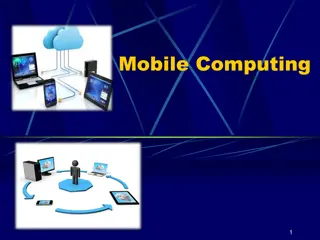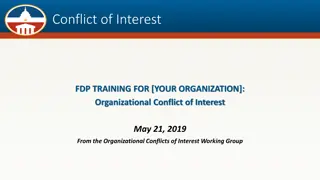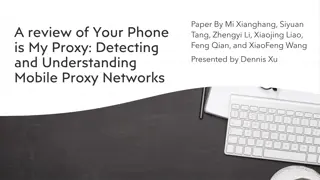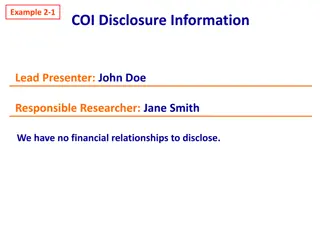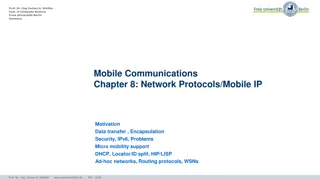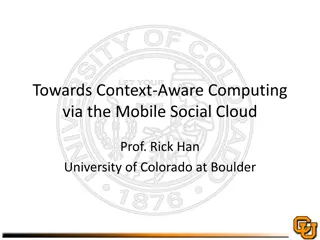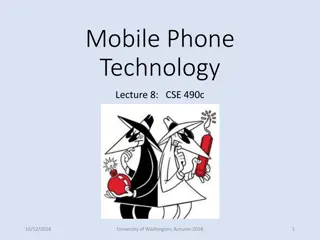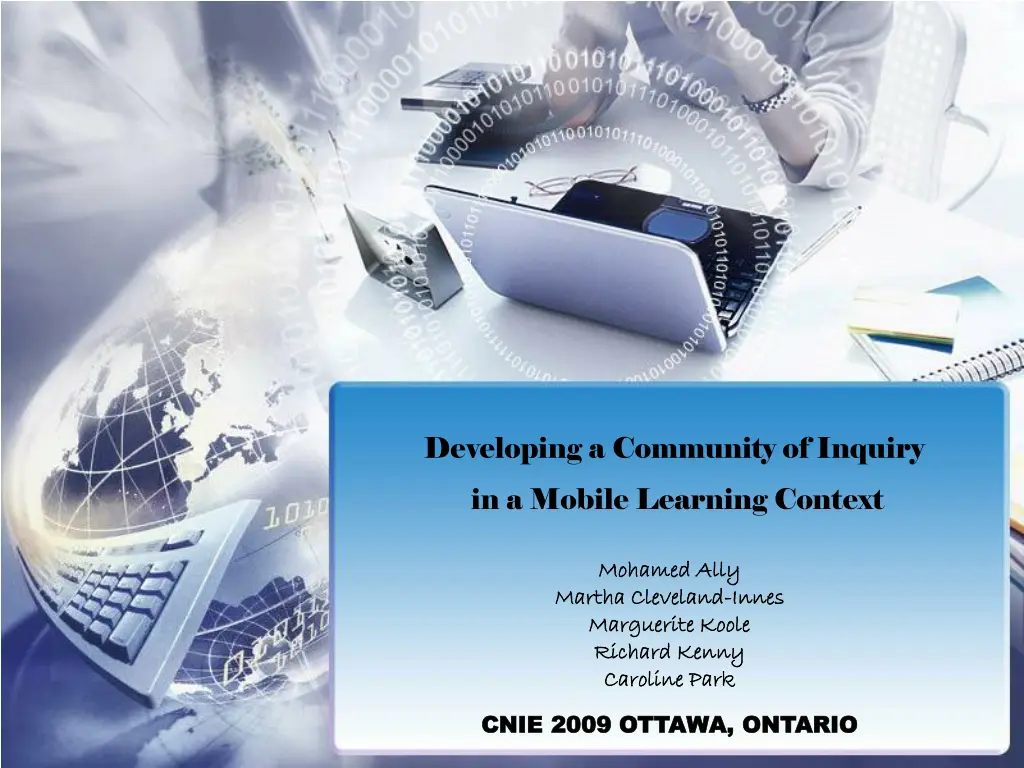
Building Community of Inquiry in Mobile Learning Context
Explore nomadic learning and the integration of mobile technology in creating and maintaining communities of inquiry. Understand the concept of nomadicity and how mobile devices facilitate learning across different contexts. Discover the potential for cognitive, social, and teaching presence in mobile learning environments. Delve into the possibilities of using mobile technology to enhance community building while on the move.
Download Presentation

Please find below an Image/Link to download the presentation.
The content on the website is provided AS IS for your information and personal use only. It may not be sold, licensed, or shared on other websites without obtaining consent from the author. If you encounter any issues during the download, it is possible that the publisher has removed the file from their server.
You are allowed to download the files provided on this website for personal or commercial use, subject to the condition that they are used lawfully. All files are the property of their respective owners.
The content on the website is provided AS IS for your information and personal use only. It may not be sold, licensed, or shared on other websites without obtaining consent from the author.
E N D
Presentation Transcript
Developing a Community of Inquiry in a Mobile Learning Context Mohamed Ally Mohamed Ally Martha Cleveland Martha Cleveland- -Innes Marguerite Koole Marguerite Koole Richard Kenny Richard Kenny Caroline Park Caroline Park Innes CNIE 2009 OTTAWA, ONTARIO CNIE 2009 OTTAWA, ONTARIO
Agenda Mohamed Ally Mobile Learning M. Cleveland-Innes Community of Inquiry Rick Kenny CoI & Mobile Learning in Nursing Education Marguerite Koole FRAME model Caroline Park FRAME & Mobile Learning in Nursing Education Marguerite Koole Possible Integrated Model
Mobile Learning Learning using information and communication technologies in a way to facilitate learner s mobility in different contexts.
Nomadicity The tendency of a person, or group of people, to move with relative frequency. It also means that learner can easily access electronic services, other learners / teachers / coaches / mentors, and various learning materials with their mobile devices while they are on the move.
Nomadic Learning A form of learning in which a learner has continuity of service across different sessions, and possibly, different locations. For example: a learner may have a different teacher every year; different colleagues every course, and a learner may change institutions from time to time. (IEEE 1484.1-2003)
Building CoI using Mobile Technology Nomadic community building how does one build and maintain a community while mobile. Part of a community in different contexts. Cognitive presence while mobile. Social presence while mobile. Teaching presence using mobile technology.
Mobile technology allows unprecedented permutations and concatenation of innovations in communication at the levels of place and space, individual, group and mass, and creative new services offered from a range of entities from amateur creators to gigantic corporations. In contrast to computer and internet technology, social science research on mobile communication technology has not caught on quickly among the scholarly community. Katz, 2006 Online Community of Inquiry Mobile Learning How does what we know of CoI apply to mobile learning?
Emotional Presence Instructors can model emotional response (Brookfield, 2006), explain its role in the instructor s own learning (Kort, Reilly & Picard, 2001), teach how to bring emotion to consciousness and make use of the emotional state in a learning situation (Campbell & Cleveland-Innes, 2005). Social Presence The ability of participants to identify with the community (e.g., course of study), communicate purposefully in a trusting environment, and develop inter- personal relationships by way of projecting their individual personalities. Cognitive Presence The extent to which learners are able to construct and confirm meaning through sustained reflection and discourse in a critical community of inquiry. Teaching Presence The design, facilitation and direction of cognitive and social processes for the purpose of realizing personally meaningful and educationally worthwhile learning outcomes
Adjustment to role of online learner New role for instructor Course design Self identity Technological literacy Interaction
Cognitive Presence 1 2 3 23. Problems posed increased my interest in course issues. -0.099 0.172 -0.785 24. Course activities piqued my curiosity. 0.064 0.070 -0.712 25. I felt motivated to explore content related questions. 0.082 -0.031 -0.770 26. I utilized a variety of information sources to explore problems posed in this course. 0.078 -0.158 -0.759 27. Brainstorming and finding relevant information helped me resolve content related questions. -0.106 0.130 -0.794 28. Online discussions were valuable in helping me appreciate different perspectives. -0.096 0.286 -0.699 29. Combining new information helped me answer questions raised in course activities. 0.101 0.043 -0.716 30. Learning activities helped me construct explanations/solutions. 0.128 0.030 -0.732 31. Reflection on course content and discussions helped me understand fundamental concepts in this class. 0.008 0.237 -0.640 32. I can describe ways to test and apply the knowledge created in this course. 0.239 -0.097 -0.619 33. I have developed solutions to course problems that can be applied in practice. 0.147 0.026 -0.653 34. I can apply the knowledge created in this course to my work or other non- class related activities. 0.171 -0.041 -0.687
Towards Mobile Communities of Inquiry Online Community of Inquiry Learning Mobile Online Community of Inquiry Mobile Learning Online Community of Inquiry Mobile Learning
Mlearning in Nursing Practice Education - Study Design- Field trial in 5 week class- Nursing 357. 2 groups: mobile learning (12) and comparison (5). Pre-study demographics survey. Post-survey of student use. 8 Semi-structured interviews ( 6 mobile group; 2 instructors). Cell phone usage data
Demographics Age Range Stage 2 (N=19) Level of Comfort (Before) Desktop Mobile 18 - 25 4 Very uncomfortable Somewhat uncomfortable 0 0 26 - 29 4 0 3 30 - 39 7 Somewhat comfortable 8 10 40 - 49 4 Very comfortable 11 4
Establishing Cognitive Presence Learning Mobile Device Features Very Difficult Relatively easy Application Difficult Easy Email 1 0 5 5 Browse Internet 0 0 6 6 Text messaging 2 0 7 3 Audio messaging 3 4 4 1 Pocket Word 1 1 4 6 Drug software 0 0 5 7
Establishing Cognitive Presence: Usefulness for Learning Activities Rarely Useful Sometimes Useful Frequently Useful Application Useless Email 3 2 5 2 Browse Internet 2 4 1 5 Text message 4 3 3 2 Audio message 8 3 1 0 Pocket Word 2 3 3 4 Drug software 1 2 4 5
Establishing Teaching Presence: Use for Communication N=12 With Instructors With Fellow Students 2X or less > 2X 2X or less > 2X Cell phone 11 1 9 3 Email 11 1 11 1 Text Message 10 2 10 2 Audio Message 12 0 12 0
The FRAME Model (DL) Usability - How the learner interacts with the device (D) Technical Characteristics -Specifications: physical, electronic (L) Mental, emotional & physiological characteristics (LS) Constructivism - How learner interacts with others within his/her socio-cultural environment (DS) Information transfer - How data & information is transferred between people & systems Context: The learning system rests within a context of data or information waiting to be transformed into meaning (S) Social & cultural Characteristics
Framework, post data analysis D L Learner Aspect Students in course Previous Knowledge Orientation Course Requirements Device Usability (iPAQ) Portability On and offline information Immediacy or asynchronicity Communication tool DL DLS On siteevidence informed learning & practice On site interaction via mobile Best Practice / Safety / Students both resource & role models) LS DS Social context Clinical practicum (client, preceptor and instructor) Socialization to Nursing Cooperation, Communication & Culture S Koole s FRAME Model for Nursing Practice Education (adapted with permission)
FRAME and CoI Cognitive Presence Teaching Presence Social Presence
A Possible Combination? Influence of Technology Technology in a minor role. Role of culture less significant. Role of physiological (non-cognitive) characteristics of learner less significant. SOCIAL PRESENCE COGNITIVE PRESENCE Social Aspect Learner Aspect TEACHING PRESENCE (Structure / Process)
A Possible Combination? Places too much emphasis on technology Aspects and presences are not equivalent.
References Arbaugh, J. B., Cleveland-Innes, M., Diaz, S., Garrison, D. R., Ice, P, Richardson, J. C., Shea, P., &Swan, K. (2008). Developing a community of inquiry instrument: Testing a measure of the Community of Inquiry framework using a multi-institutional sample. The Internet and Higher Education, 11 (3-4), 133-136. Garrison, D. R., Anderson, T, & Archer, W. (2000). Critical inquiry in a text-based environment: Computer conferencing in higher education. The Internet and Higher Education, 2, 87 105. Katz, J.E. (2006). Mobile communication and the transformation of daily life: The next phase of research on mobiles. Knowledge, Technology & Policy, 19 (1), 62-71. Kenny, R.F., Park, C.L., Van Neste-Kenny, J.M.C., Burton, P.A. & Meiers, J. (2009). Using mobile learning to enhance the quality of nursing practice education. In M. Ally (Ed.), Empowering Learners and Educators with Mobile Learning. Athabasca, AB: Athabasca University Press. Kenny, R.F., Park, C.L., Van Neste-Kenny, J.M.C., Burton, P.A. & Meiers, J. (2008). The feasibility of using mobile devices in nursing practice education. In J. Traxler, B. Riorden & C. Dennett (Eds.), Proceedings of mLearn 2008, the 7th World Conference on Mobile Learning, Shropshire, England. Koole, M. L. (2005). The framework for the rational analysis of mobile education (FRAME) model: An evaluation of mobile devices for distance education. Unpublished master s thesis. Athabasca University, Alberta. Retrieved September 21, 2006, from http://library.athabascau.ca/drr/viewdtr.php?course=thes&id=205 Koole, M. L. (2009). A model for framing mobile learning. In M. Ally (Ed.), Empowering Learners and Educators with Mobile Learning. Athabasca, AB: Athabasca University Press.

